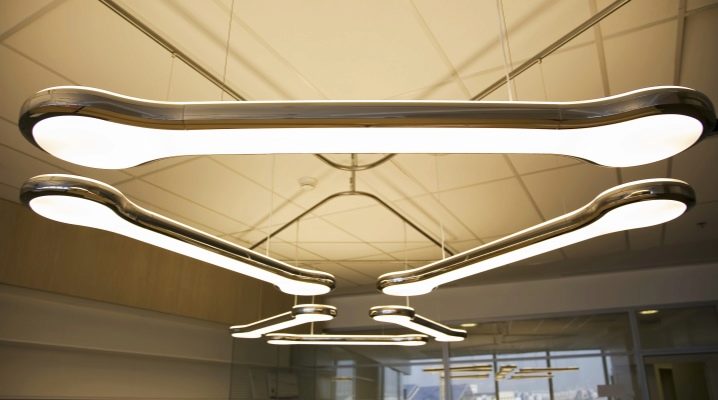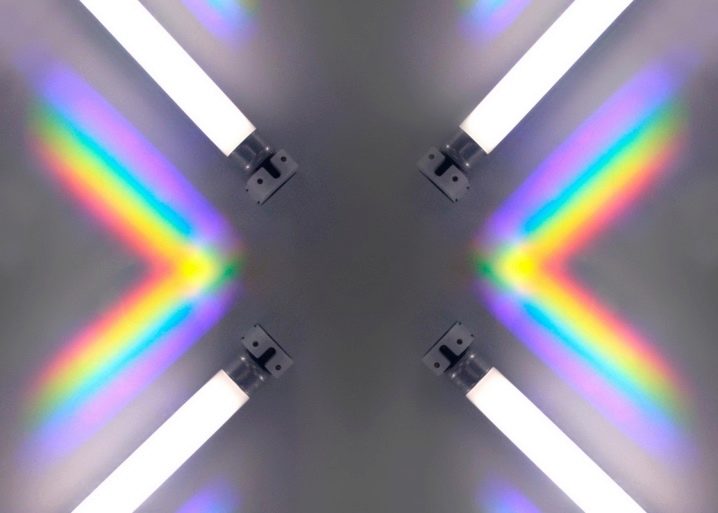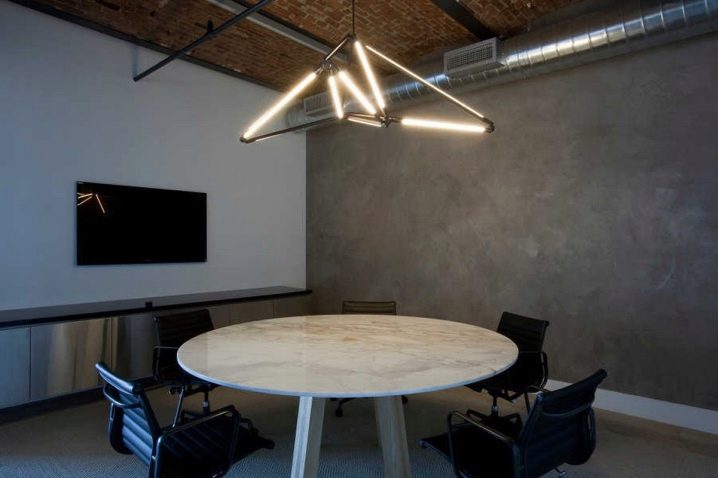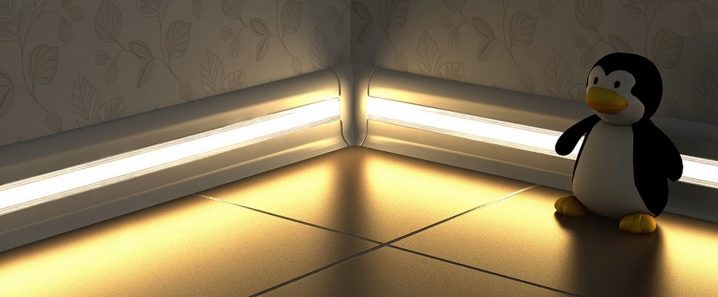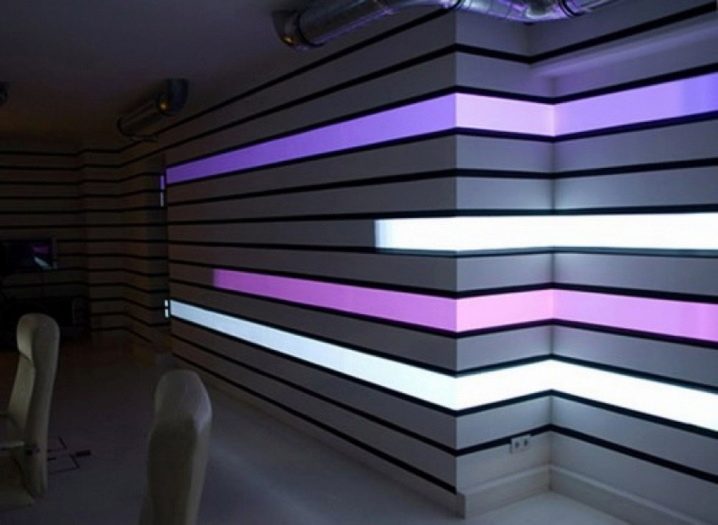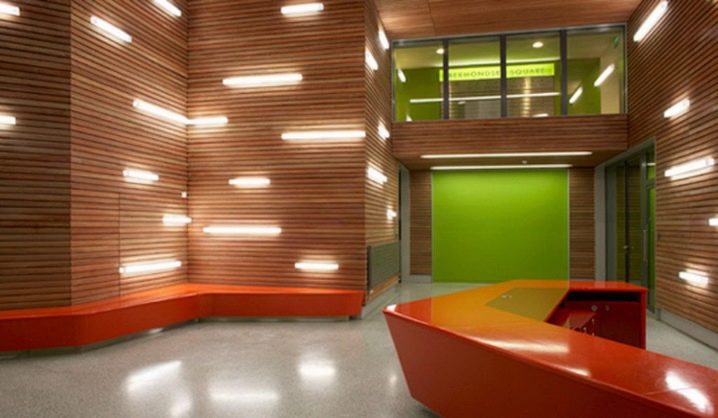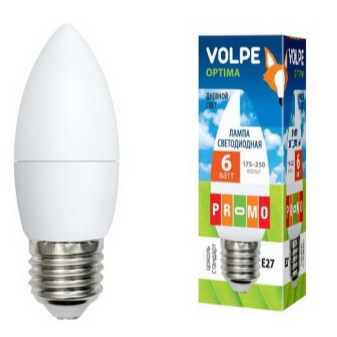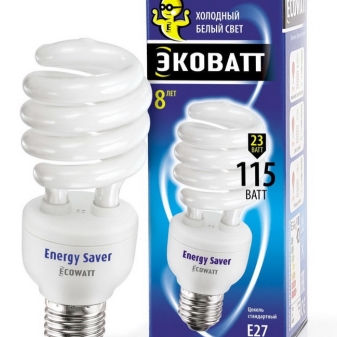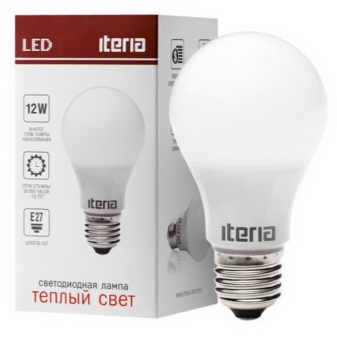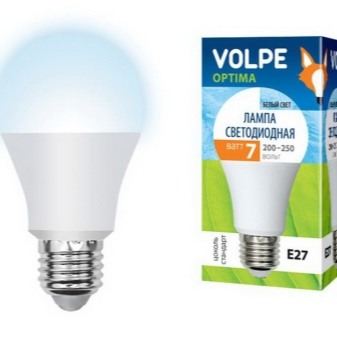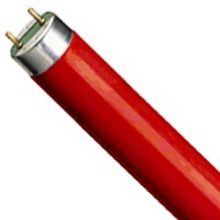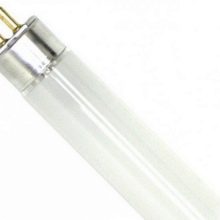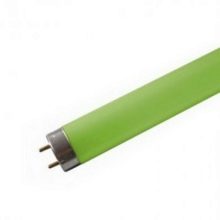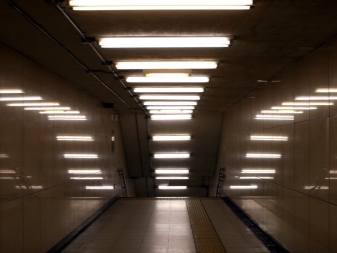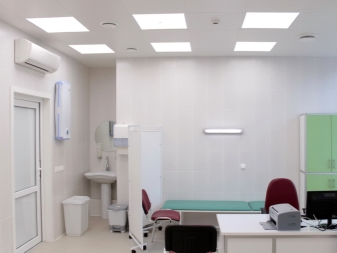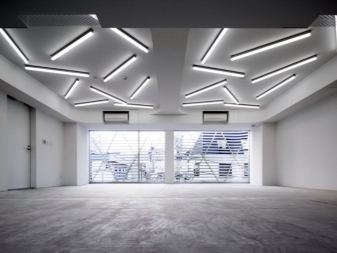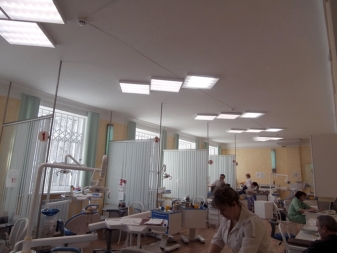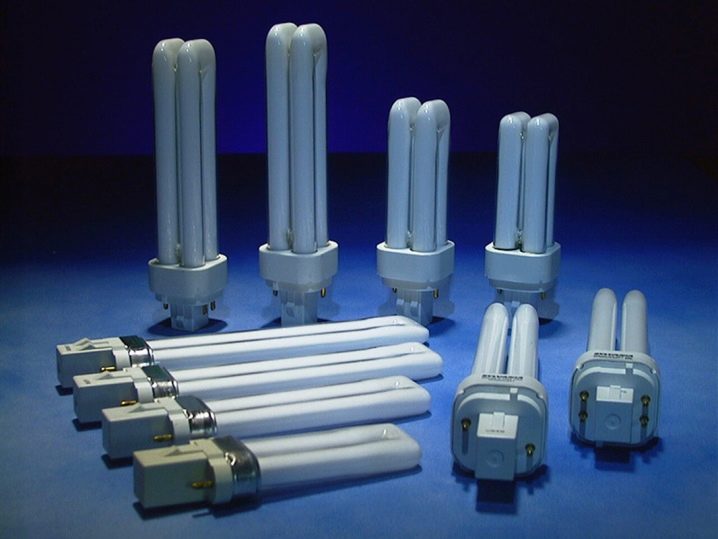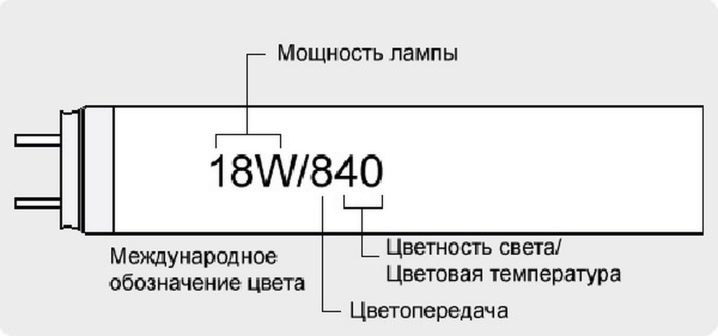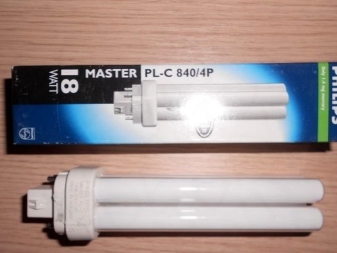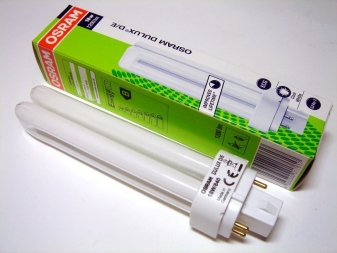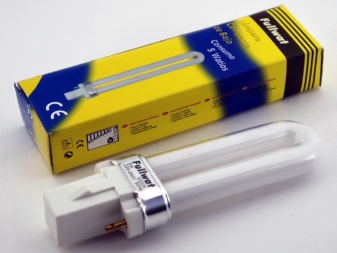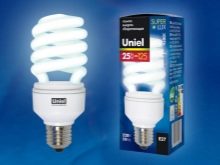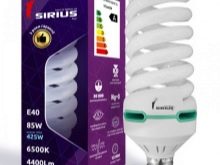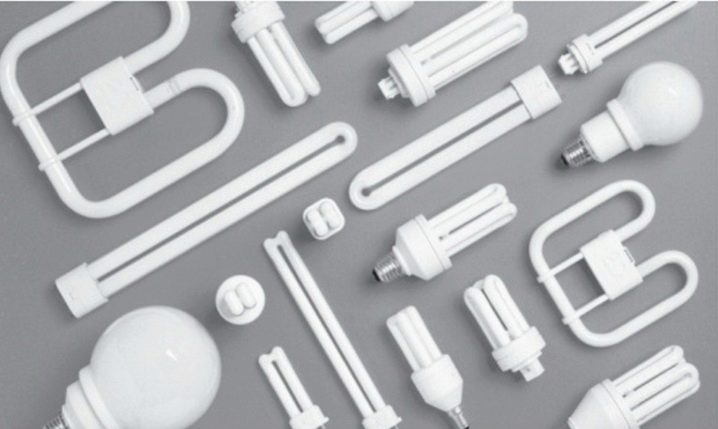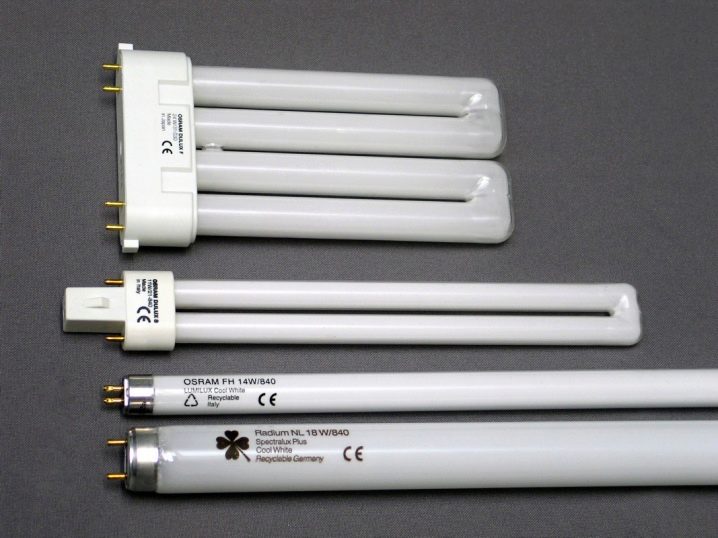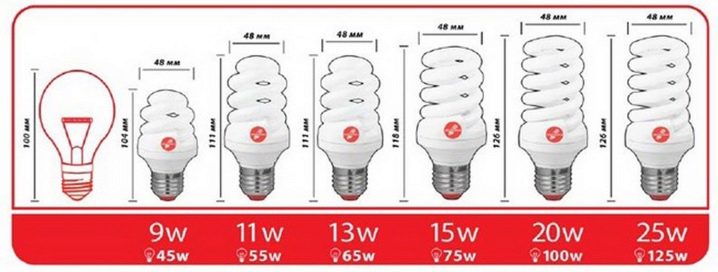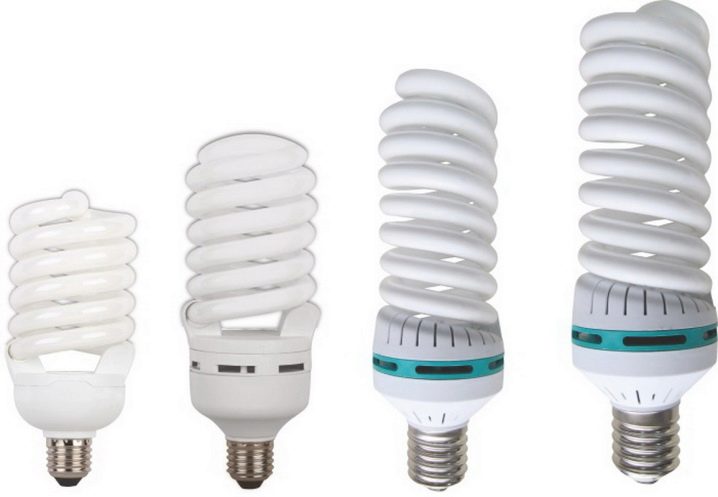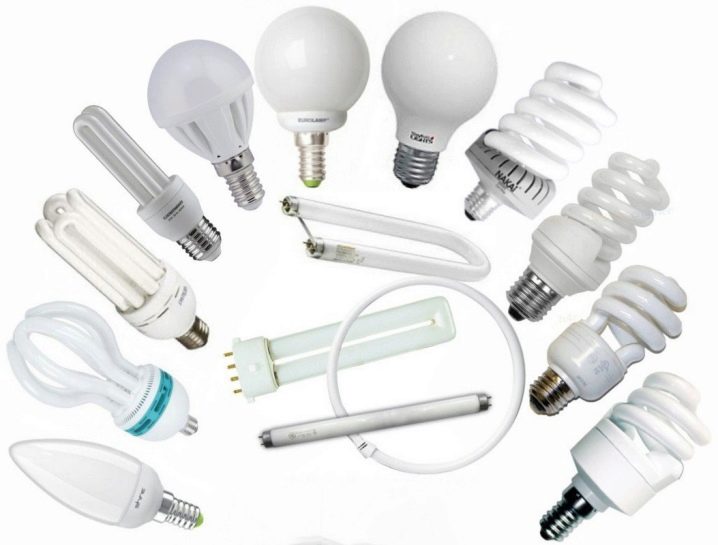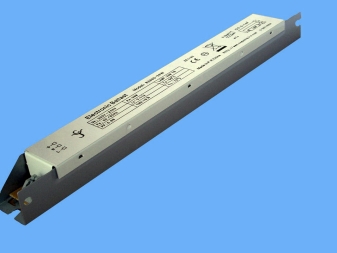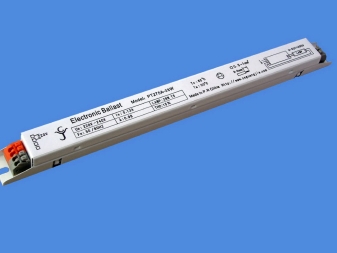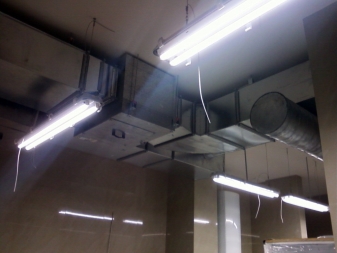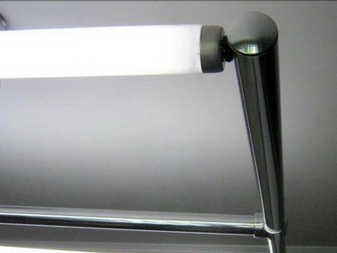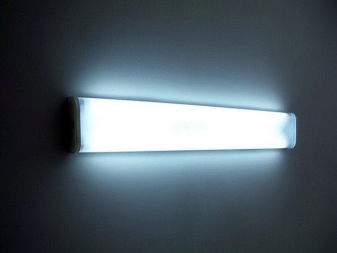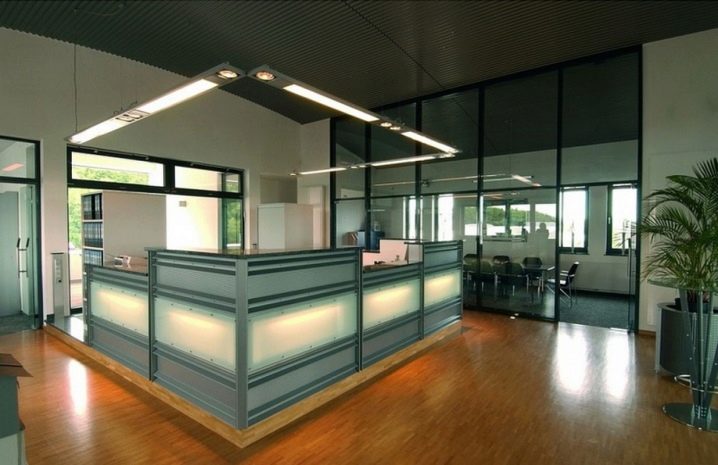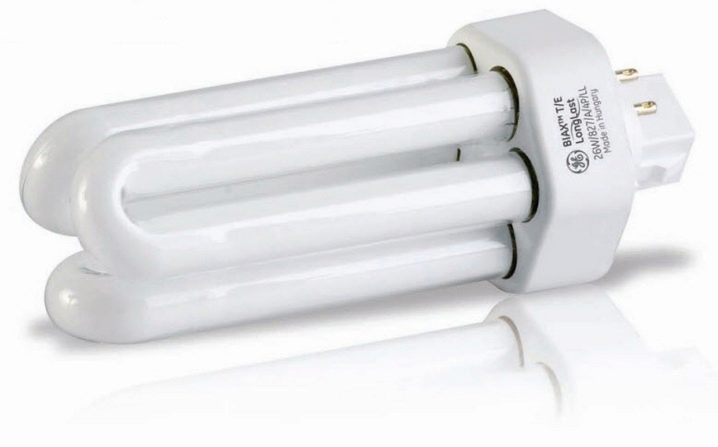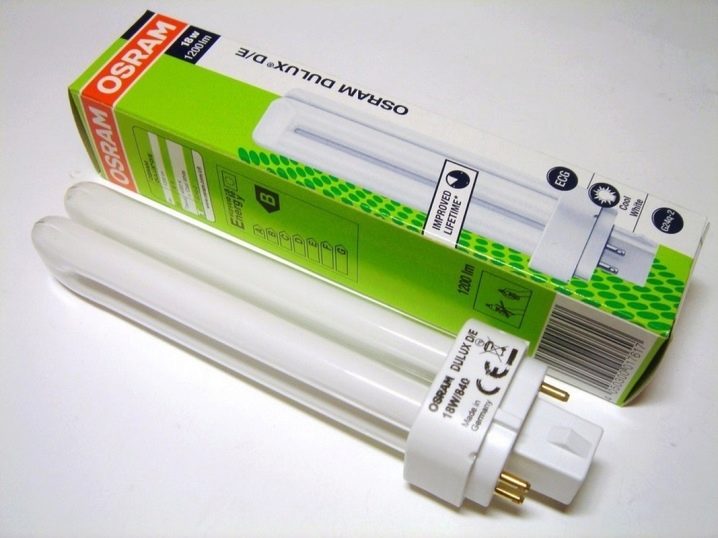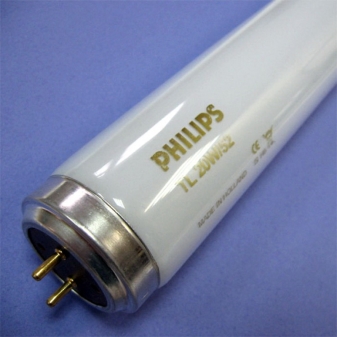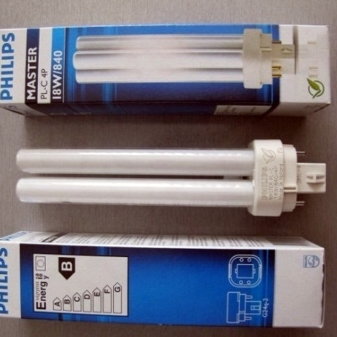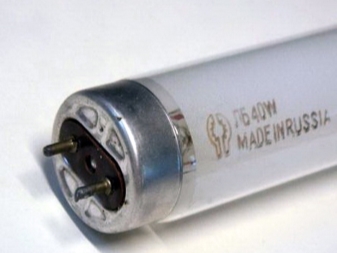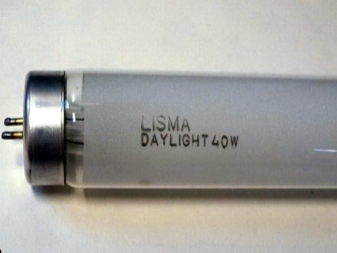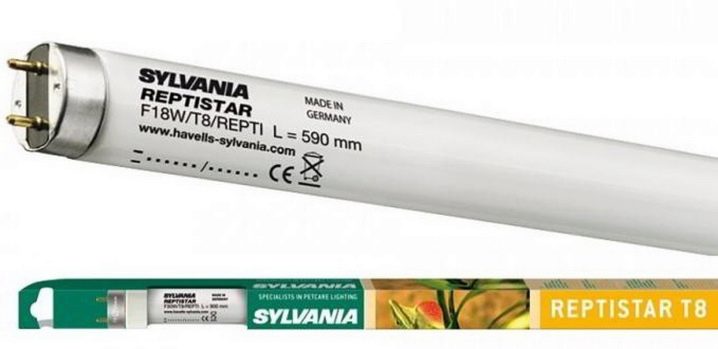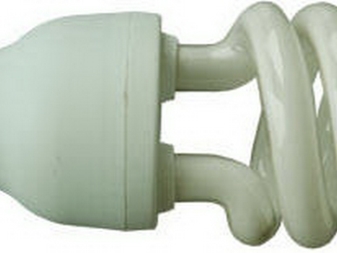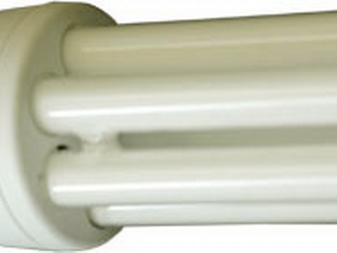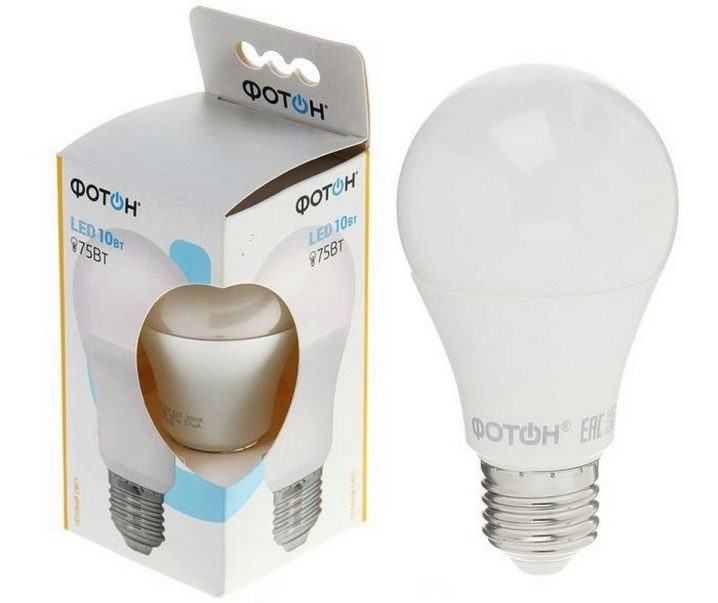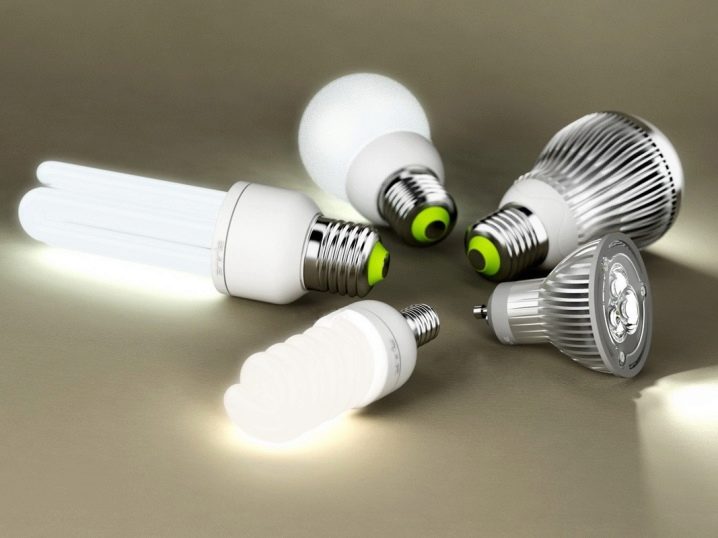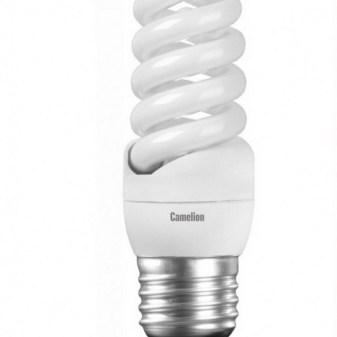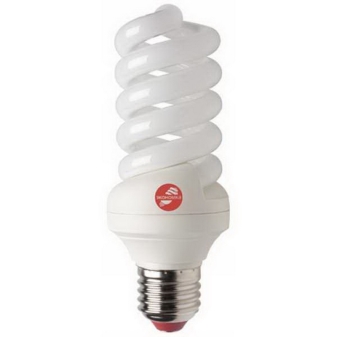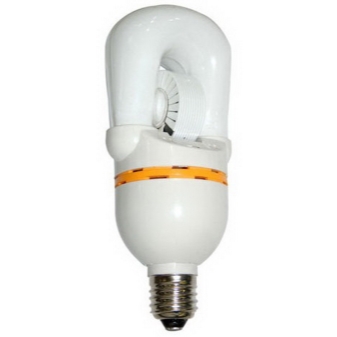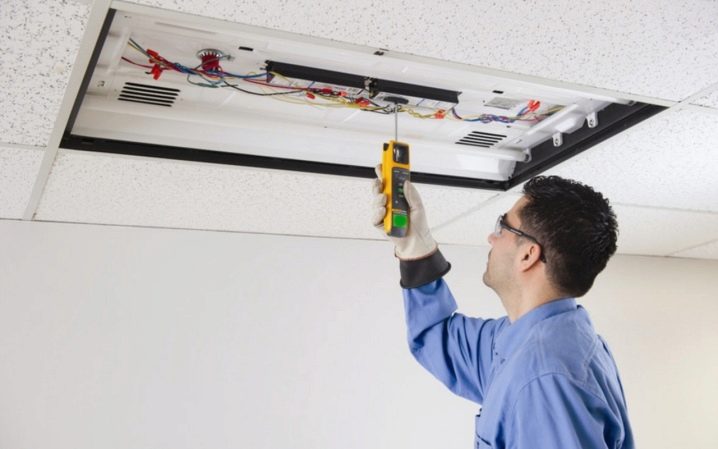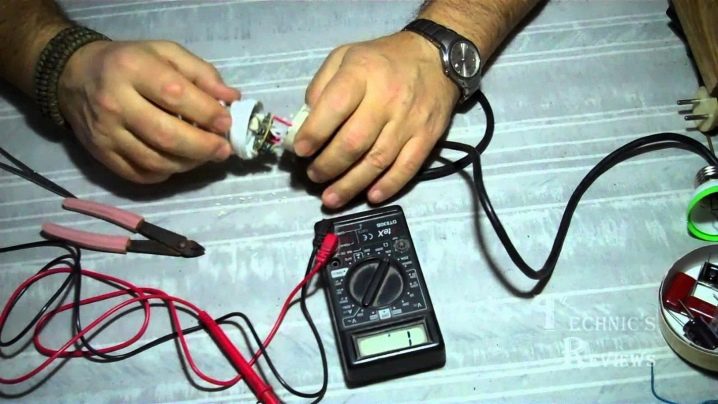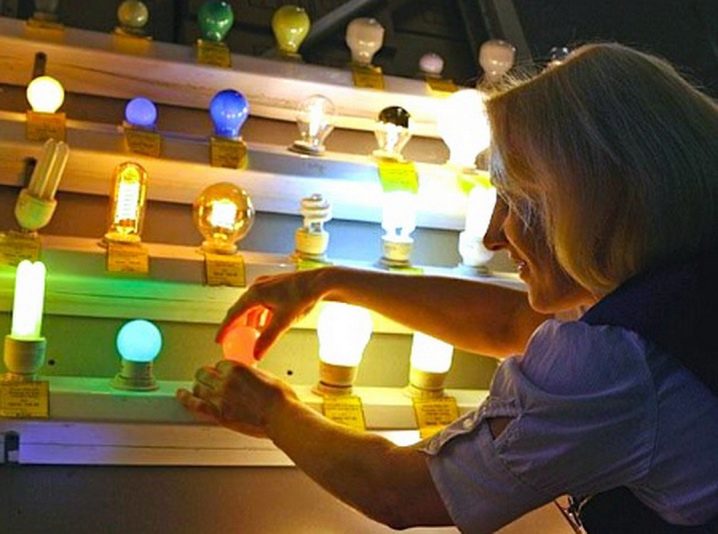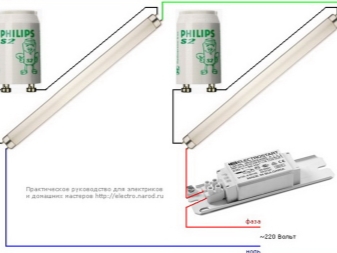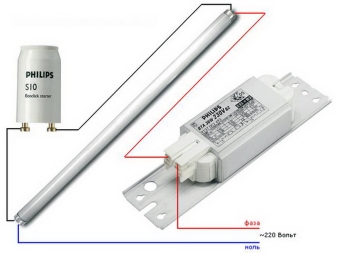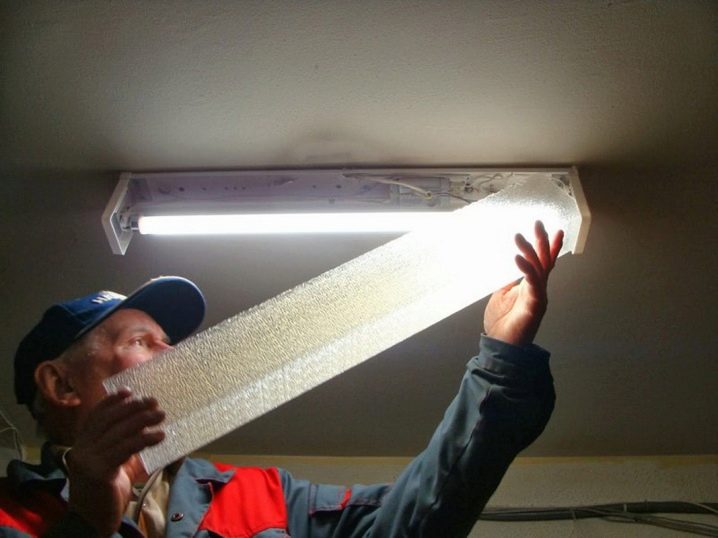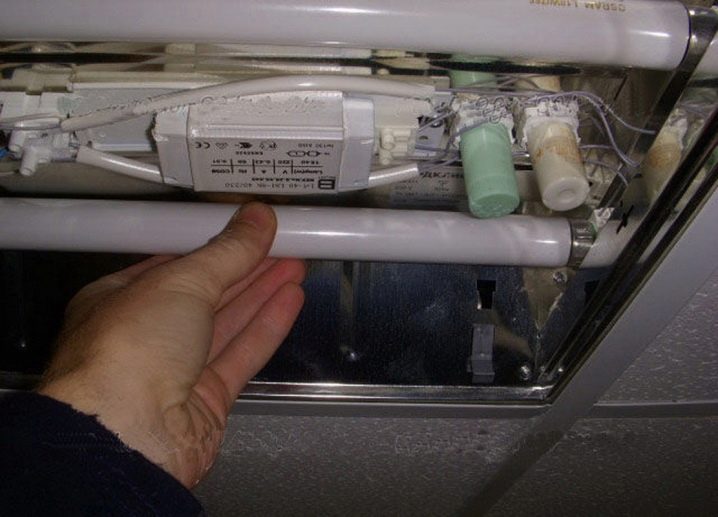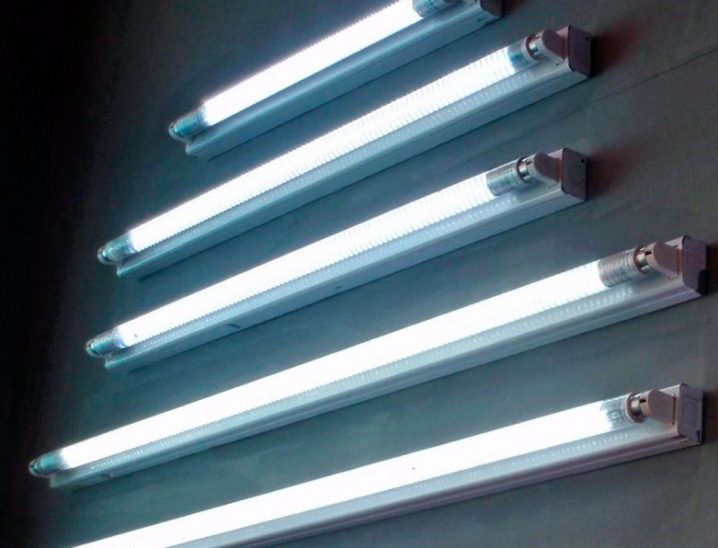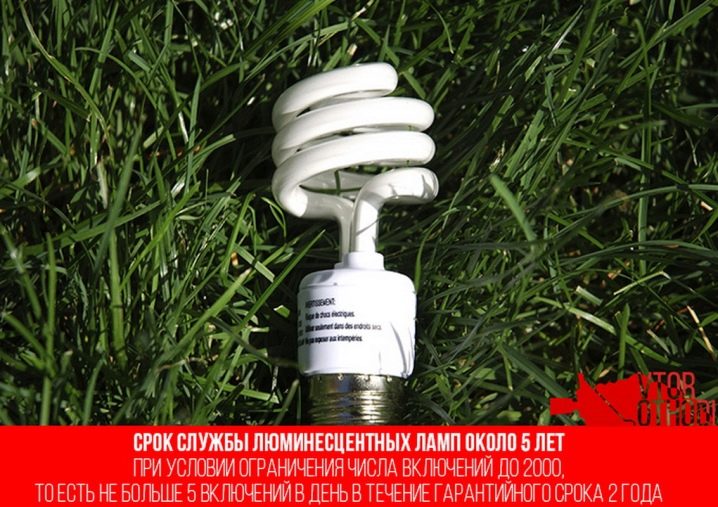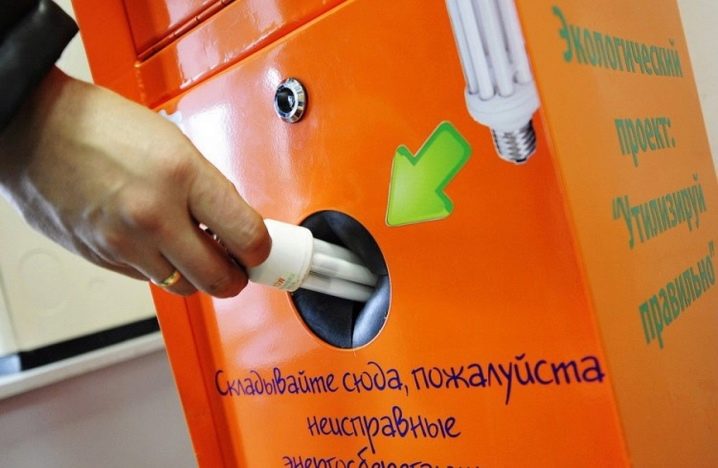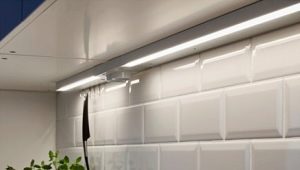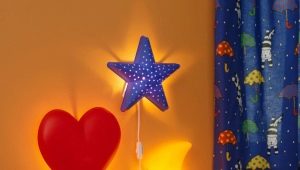Fluorescent lamps
For many people, the discovery will be that fluorescent lamps have many varieties. They can be selected for any kind of lighting: for outdoor and for lighting inside the house. The characteristics of light bulbs also vary.
What is it and how are they called?
Fluorescent lamps are often called fluorescent lamps because of their ability to produce pure white light that is close to natural. They differ from all other varieties due to another mechanism for creating lighting. Once upon a time, fluorescent lamps were not popular, because the range of lighting shades was very poor: there were only white-green or white-pink tones. However, a significant advantage was the fact that it was possible to create lamps of various shapes. Soon, the novelty was appreciated by designers, highlighting with the help of fluorescent lamps of unusual configurations all sorts of interesting details.So the lamps became part of everyday life.
It is worth a little more to dwell on the work of the lamps. They glow due to the fact that an electrical discharge in mercury vapor in a flask creates ultraviolet, with which the phosphor further reacts - a special deposition on the walls of the flask. It converts UV radiation to the visible light spectrum. The degree of light output fluorescent lamps are not much inferior to LED. Lumens in LED lamps do not always closely correlate with power, and the same can be said about fluorescent daylight. Do not confuse lumens with suites: the first show the light output of the bulb, and the latter show the degree of illumination of the room.
For fluorescent lamps produce various bases: compact fluorescent bulbs can even be bought to replace ordinary incandescent bulbs. Not only are phosphor models brighter, they consume much less electricity and are also less harmful to eye health. The main disadvantage of fluorescent light sources is their harmfulness (if the flask cracks, then prolonged inhalation of mercury vapor can greatly harm the human body).Another drawback is the inability to use the lamp at a low temperature, as it simply will not turn on.
Types and types
Fluorescent lamps are divided into many factors. One of them is size. There are compact models or large. Compact designs are often chosen as an alternative to ordinary incandescent lamps in ceiling chandeliers. They are equipped with a screw base. Large models are most often inserted into lamps designed specifically for them. Lamps come in different shapes: long linear, tubular, curly. There are more common configurations, for example, a round lamp or in the form of a candle.
The finished model has the appropriate marking - the designation of the light temperature.
The temperature of light distinguishes the following types:
- LD - fluorescent lamp;
- LHB - cold white light;
- LB - lamp of neutral white light;
- LTP - a lamp of warm white light;
- LU - lamp of natural light;
- LC, LV, LZ, LG, LS — red, yellow, green, blue, blue, respectively;
- LUF - ultraviolet lamps used for disinfecting premises.
Color lamp is widely accepted.That it is often chosen in the street lamp, which allows the use of fluorescent light bulbs. In the case of outdoor lighting, ceiling lamps must be used to create a suitable microclimate for the operation of fluorescent models. For public institutions like hospitals, administrative centers and so on, it is customary to buy fluorescent lamps. There are single-lamp, two-lamp, four-lamp models depending on the size of the illuminated area. It should be noted that due to certain peculiarities of the work of the lamps, a dimmer cannot be applied to them to adjust the intensity of the brightness of the light.
Another popular model is fluorescent energy saving. It is made of several curved spirals and usually has a compact appearance and a screw base. On any energy-saving light bulb they usually write about the principle of its work. Keep in mind that in the case of luminescent variants, preference should be given only to quality variants, since in the case of a depressurization of the bulb, the health will be seriously damaged.
In general, there are options for high and low pressure.The first type is used to create street lighting, and the second - to highlight the living rooms of the house.
Specifications
You can fully recognize the device of a particular model by looking at its labeling. It reflects all the characteristics of the lamp. An important characteristic is the temperature of the glow. More about this aspect was discussed in the previous section. For measuring the diameter of the bulb is applied 1/8 inch in accordance with international standards. When marking is put the letter T and the corresponding part of an inch, for example, T8 (25.4 mm). Please note that the thickness of the lamp directly affects how long it will last: wider in diameter models are much more durable than thin samples.
You can also find out about the bases and their number by marking the lamp.
The following types of connectors and caps are used:
- G23;
- 2G7;
- G24Q1;
- G24Q2;
- G24Q3;
- E14;
- E27;
- E40.
In order to determine the voltage of the network, it is also enough just to look at the lamp. A fluorescent lamp can be directly connected to a 220-volt network or it may be necessary to lower the voltage to 127 V.
The shape configuration is reflected in the lamp designation.In addition to the standard notation, there are additional ones.
To the standard include:
- The linear form has no designation;
- U is a horseshoe shape;
- S - spiral shape, usually used with compact lamps;
- C - candle lamp;
- G is the shape of the sphere;
- R - in the form of an ordinary incandescent lamp with a reflector defining the direction of the light flux;
- T - tablet lamp.
Additional values include the following:
- M - small-sized. The letter comes after the one that indicates the form, for example, TM is a small-sized light bulb of a round flat shape.
- P - body, diffusing light.
Not all characteristics are listed, as each manufacturer considers it necessary to introduce something different into the design of fluorescent light bulbs. However, there are such important indicators as power, lamp sizes and the principle of their work, and I would like to dwell on the listed points.
Power
Power marking is performed using the letter W followed by a number indicating the number of watts in the light bulb. However, focusing only on power should not be: in the case of fluorescent lamps, their light output means much more.Below is a table of the corresponding power fluorescent lamps and incandescent lamps with equal luminous efficiency.
|
The greater the lamp power, the wider or longer it is. For example, a linear design with a power of 18W with a diameter of 26 mm will be 590 mm, with 30W - 895 mm, with 36 W - 1200 mm, and with 58W - 1500 mm. The table clearly shows the great efficiency of fluorescent lamps compared to traditional incandescent lamps. The classification of capacities was made on the basis of the most frequent selection. This includes models of both street lighting and indoor.
There are a few more nuances that relate to the power of energy-saving lamps. Regardless of the selected fluorescent model, over time it will lose some of the brightness of the light. This is due to the gradual burnout of the element inside. It is also necessary to know that 30% of the total power consumed during operation accounts for the lamp to catch fire. Some lamps are equipped with a special start-up system, which does not make them more economical. In such cases, power consumption simply stretches over time.
Regardless of the power of the lamp, it does not heat up much. In contrast to incandescent bulbs, the heating limit of the luminescent option is 50-60 degrees Celsius. Even touching the lamp without gloves, it is almost impossible to get burned. Very few modern models of light bulbs can boast the same distinctive properties.
Dimensions
As mentioned above, compact models are distinguished or large standard linear models. Nowadays, compact fluorescent lamps are more often used, so it will be logical to dwell on them in more detail. Compact samples are light bulbs with a curved tube. There are both U-shaped and spiral models. Compact versions are made for different types of caps, which opens up a wide scope for replacing ordinary fluorescent lamps with energy-saving ones.
There are models with screw bases, and there are intended only for special fluorescent lamps. It is worth noting that models with a screw base are more expensive, since all fluorescent lamps require ballast, and in such models it is embedded directly into the base of the base.
Compact energy saving fluorescent lamps are different from incandescent bulbs with the following characteristics:
- Energy-saving models absorb 80% less electrical energy with the same light output as incandescent bulbs;
- It is possible to choose a model of the desired light temperature;
- As a rule, the term of the compact luminescent model is much higher than that offered by manufacturers of incandescent lamps. Traditional tungsten light bulbs last about 1000 hours, while high-quality fluorescent replacement can last 6000-15000 hours without replacement;
- Due to the durability of daylight models, it takes much less time, effort and money to care for and maintain them in working condition.
Linear large models are most often used for lighting in non-residential premises, for example, in warehouses. Due to the high ripple rate, equal to the double ripple of the power grid, they cannot be installed to illuminate moving conveyors without additional more stable incandescent bulbs.
Principle of operation
Because of the special structure of the lamp for long-term work, it must be supplied with ballast,allowing to level negative consequences of the fact that a large amount of current is passed through the lamp. Ballasts are electromagnetic and electronic. Electromagnetic ballast is cheaper and simpler in design. However, this model has several serious drawbacks. The most significant of these is that lamps with such ballast strongly and often flicker. This leads to rapid fatigue, loss of strength, and also increases the load on the eyes during long-term work in a room with such lighting.
In addition to the options with electromagnetic ballast produce an unpleasant buzzing noise, which quickly comes headache. There are also disadvantages that are not related to human well-being. For example, lamps equipped with electromagnetic ballast require time to start. It usually fluctuates within 1-3 seconds, but as the model wears it will increase. Also, lamps consume more electricity than models on electronic ballast.
Electronic ballast converts the standard mains voltage into high frequency alternating current, which is then used to power the lamp.Such models are a bit more expensive, but they do not produce noise, do not flicker, the ballast itself takes up less space and weighs less too. There are models that instantly light up, but a similar starting system has a bad effect on the life of fluorescent lamps. Much better if there is a pre-heating system. In this case, the start takes about one second, which usually does not play a special role.
Thus, it is best to choose a model with electronic ballast, since its cost is not much higher, and the advantages are obvious. Moreover, today this option is more common than with electromagnetic ballast, so there should be no problems with searches.
What brands produce?
Today, many manufacturers produce all kinds of light bulbs. There are models of both Russian and foreign production. Below are a number of firms that enjoy great trust among consumers.
- Ge - a company founded by Thomas Edison. If initially General Electric specialized only in the production of incandescent lamps, now it is one of the oldest and most respected global brands.
- Orsam - another brand with a world name, which produces various types of lighting equipment, ranging from options for cars and ending with grandiose lighting facilities for public events.
- Phillips offers high-quality fluorescent models and components. Lamps are issued different: both tubular, and compact. There are different types of socles, suitable for both special lamps and ordinary ones.
- Lisma - is a leading company in the production of lamps in Russia. The company offers high quality samples, as well as all the parts for them. The advantage is a large selection of models.
- Sylvania specializes not in simple lamps, but in environmentally friendly ones. As you know, birds are very sensitive in the ultraviolet, so for the rooms in which they are contained, it is necessary to choose special models. Similar options are just produced under this brand.
- RUE "Vityaz" produces products of medium quality, which has a democratic price. Many people prefer the lamps of this company just because of the cost.
- Tomsk Lamp Factory has been producing lamps since 2009 and has already gained a good reputation among users. Products have an attractive price and good quality.
- LLC "Foton" - one of the leaders in the Russian market, known for a large assortment of products. Here you can find not only fluorescent lamps, but also full lamps.
In a word, there is something to choose from. You can choose a quality model for every taste and wallet.
How to choose?
When choosing luminescent models you need to focus on many factors. Some of them have already been given in this article. The lamp must be manufactured by a trusted manufacturer. Poorly made options in the event of depressurization are dangerous to health. Do not buy a Chinese fake, because it does not last long, and no one needs mercury vapors in the air.
Focus on the purpose for which the fluorescent lamp is needed. There are specialized options for indoor, street, medical facilities. Luminescent options are used everywhere, including to maintain constant illumination in flowers or for keeping animals. In the latter case, it should be especially carefully attributed to the selection of options, it must necessarily be suitable for these purposes, otherwise you only harm the beasts.Do not forget about the optimal light temperature. The most comfortable for the eyes is the natural white color. Combining multi-colored models, try to select high-quality samples.
Pay attention to the type of ballast. It is best to prefer electronic since such lamps have proven themselves better.
Take a closer look at how the lamp works. It may imply a built-in starter or its presence in the lamp.
There are models of the following types:
- RS - rapid start - do not require a starter and are ignited without preliminary heating of the elements.
- InS - instant start - models with a gradual start “are late” when turned on for 1-3 seconds, but serve better.
- US - universal start - universal options.
- PHs - pre-heat start - fluorescent luminaires requiring a starter.
Models that do not have such labeling require the presence of a starter. Hence, the lamp itself is so arranged.
How to check the health?
In order to check whether a failed fluorescent light bulb is in a suitable condition, a small test should be carried out:
- First, get the lamp itself directly from the lamp and see if the tube is black.As a rule, the presence of large black spots indicates that the lamp has fulfilled its due time and will not light up anymore.
- Next, a multimeter needs to check whether the whole filament. To test, set it to the resistance test mode and test each thread in turn with a tester. If any of them is blown, the value on the multimeter will be equal to one. In simple terms, this means that the electrical circuit is broken.
- If both of the above factors are in perfect order, then it is necessary to work with the ballast.
The simplest thing you can do to check the operation of the ballast is to remove the luminescent tube, connect ordinary cables to the body wires and install a standard light bulb between them. Please note that it is impossible to turn on the appliance into the network without a light bulb, otherwise the ballast may burn out. If the light bulb caught fire, it means that the ballast is working, and the matter is in the luminescent tube itself: maybe a bulb has burst or one of the filaments has blown. If the light does not light up, then the ballast is defective, and the whole lamp will have to be changed.
These methods are only suitable for checking light bulbs already in use.Before buying a fluorescent lamp should be checked directly in the store. If there is an unpleasant smell, strong flickering or other things that cause vigilance, feel free to ask to replace the model provided to you, otherwise it may burn out a couple of weeks after the purchase.
How to connect?
It is possible to connect one or two fluorescent lamps at the same time. For each of these methods developed its own connection scheme. Take a look at the diagram. It clearly shows how and what mechanisms are connected with each other for proper operation. To begin with, the current from the network enters the choke, where it is converted to further power the lamp. After the current enters the lamp itself, it goes to the starter. Further, the current passes to another spiral of the bulb, closing the circuit, and thus an electrical discharge is formed inside the lamp, igniting the mercury vapor.
For two lamps, the principle of operation is almost the same, except that the current from the choke gradually flows into two starters.
To connect the lamp, follow the instructions below:
- First you need to find the right lamp.Pay attention not only to the aesthetic component, but also to whether the mains voltage in your house corresponds to the one indicated on the lamp. Otherwise, it will quickly fail.
- Depending on what type of lamp you have chosen, either screw it into the cartridge, or fix it in the lamp by snapping it in from two sides. In the second case, make sure to fix your version as indicated on the body of the lamp. Sometimes the lamp performance depends on how correctly all the contacts were connected when connected.
- Check the condition of the lamp by turning it on. With proper operation, it will not flicker or make noise.
As you can see, the independent connection of the fluorescent lamp does not present any particular difficulties even for a beginner. The most important thing is to keep in mind the elementary safety rules: do not work with bare wires when the mechanism is in the current supply mode.
How to change?
Many people have difficulty in replacing the fluorescent light bulb with a new one, because they have no idea how to get the burned-out model out of the case. Fortunately, there is nothing difficult about it:
- Turn off the power. It is advisable not just to turn off the light itself, but to completely de-energize the apartment.
- Holding the lamp tightly, begin to rotate it. Rotate will have to stop, the total angle is about 90 degrees. This will turn the pins of the lamp into an upright position.
- Next, gently pull the lamp towards you and down until it is completely detached. Put the dismantled light source in a safe place so that it does not crash: remember, mercury vapors are dangerous to health and life!
- Carefully install the new light bulb. Repeat the path along which you pulled the lamp, only in the opposite direction. Having reached the grooves, begin to gently twist the tube until fully secured. The reliability of the light bulb can be checked by pulling a little.
- Check if the device is working. To do this, turn on the current in the apartment and click the switch.
It can be stated with confidence that the replacement of the lamp is very simple, and, if desired, it will be performed by anyone. Do not forget to arm yourself with a step-ladder if you are mounting the lamp on the ceiling. So you will facilitate your work, at the same time reducing the chance of accidentally dropping a faulty fluorescent lamp and breaking it.When replacing lamps in the office, where panels of several lamps are usually protected with frosted glass, be sure to wipe the lamp inside. It is not known when you still will be able to clean it from dust, moreover, it is unlikely that you would like to do all the above manipulations specifically for this.
Service life and disposal
Fluorescent lamps have one of the longest service life to date. Some manufacturers claim that their models are suitable for continuous work for 20,000 hours. Such figures can not fail to amaze, but the average value of the operation of such options is 13000 hours. Models that have a long operational life are good for office premises, in which there is no possibility to constantly replace some lamps with others. It is worth noting that tubular models usually work longer than figured ones. The same rule applies to the diameter of the lamps: thicker models can be operated longer than thin ones.
As it is known, mercury vapor is inside the flask, because of which utilization of luminaires should be carried out using a special technology.Fines for mindless handling of such equipment have long been established abroad due to the great harm to the environment caused by recycling. Absolutely all fluorescent lamps is a warning that they can not just be thrown into the garbage can. Mercury is a poisonous substance, and in case of accidental splitting of the lamp, its pair will stay in the air for a long time, not moving anywhere and poisoning the space. Unfortunately, few people in Russia are concerned about this issue.
However, not everything is so bad. There are some companies involved in the disposal of fluorescent lamps, but so far there are not so many of them. The simplest solution would be to bring a blown bulb to the interior light. As a rule, experts there know what to do with daylight bulbs, and some even collaborate with recycling companies. Be sure to ask whether it is possible to hand over a blown flask to a large lighting fixture nearest you.
How to restore the fluorescent lamp with your own hands, see the next video.
